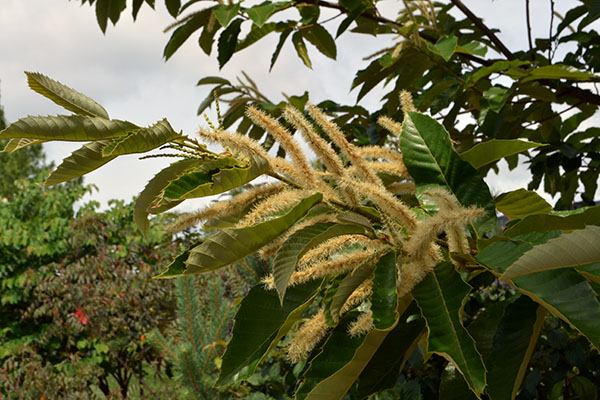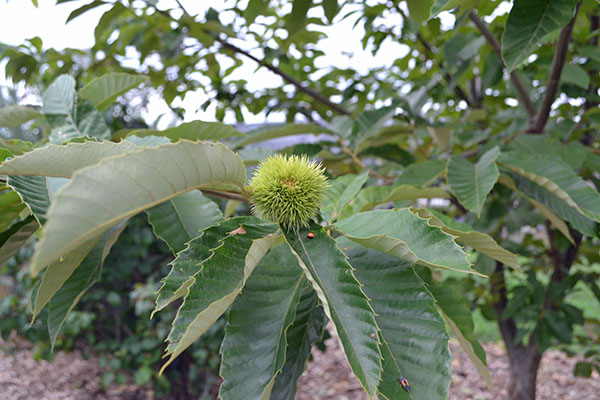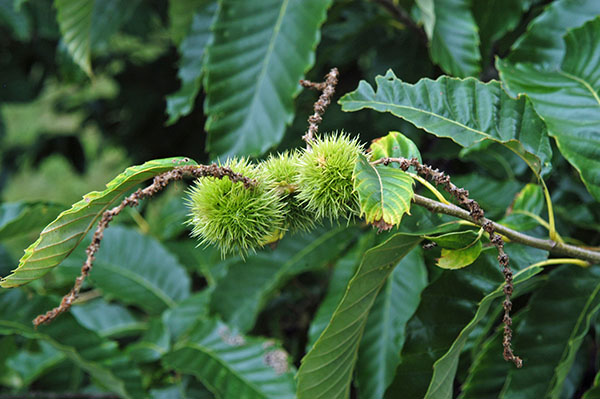Castanea mollissima
Chinese Chestnut
China, Korea
Round-topped, spreading, sturdy form with low branches. Slow to medium growth rate.
Full sun, well-drained soils; tolerant of hot, dry conditions. Requires space for wide-spreading natural form.
Transplanting may be hampered by a taproot. Flowers with highly disagreeable, rancid odor. Edible fruit attracts squirrels.
Alternate, simple, 5 to 8 inches long, elliptic to lanceolate. Veins end in sharp pointed teeth. Shiny dark-green.
Buds are rounded, .125 inches with 2 to 3 scales; tan in color.
Young branches olive-brown in color, mature bark ridged and furrowed gray-brown in color.
Monoecious. Off-white male flowers are borne on catkins 4-5 inches long; female flowers are not showy. Flowers have an unpleasant fragrance.
Brown nut, 2 inches across, 2-3 enclosed in a lethal, spiny involucre (hull). Edible fruit develops when multiple varieties are present.
Seed or cuttings.
'Abundance'
'Kuling'
(Selections for nut production), 'Meiling', 'Nanking'.







